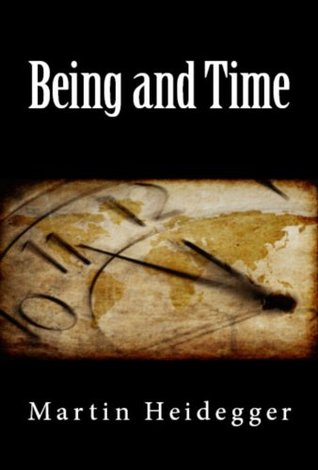More on this book
Community
Kindle Notes & Highlights
‘An understanding of Being is already included in conceiving anything which one apprehends in entities.’(1)(ii)
But the ‘universality’ of ‘Being’ is not that of a class or genus.
unity of analogy
Every inquiry is a seeking [Suchen]. Every seeking gets guided beforehand by what is sought.
will make manifest,
‘semblance’
If one then says that with the word ‘appearance’ we allude to something wherein something appears without being itself an appearance, one has not thereby defined the concept of phenomenon: one has rather presupposed it.
wherein something announces itself,
If in
the sheer sensory perception of something, is ‘true’ in the Greek sense,
Covered-up-ness is the counter-concept to ‘phenomenon’.
undiscovered. It is neither known nor unknown.(2)
Everything which belongs to the species of exhibiting and explicating and which goes to make up the way of conceiving demanded by this research, is called ‘phenomenological’.
Phenomenological truth (the disclosedness of Being) is v e r i t a s t r a n s c e n d e n t a l i s.
Hunter Swart liked this
‘A-priorism’ is the method of every scientific philosophy which understands itself.
architectonics
the question of Being is the spur for all scientific seeking.
‘Practical’ behaviour is not ‘atheoretical’ in the sense of “sightlessness”.(1)
Being-a-sign-for can itself be formalized as a universal kind of relation,
That
Dasein, in its familiarity with significance, is the ontical condition for the possibility of discovering entities which are encountered in a world with involvement (readiness-to-hand) as their kind of Being, and which can thus make themselves known as they are in themselves [in seinem An-sich].
Dasein
A Contrast between our Analysis of Worldhood and Descartes’ Interpretation of the World
The Being of a ‘substance’ is characterized by not needing anything.
Values would then be determinate characteristics which a Thing possesses, and they would be present-at-hand.
The readiness-to-hand which belongs to any such region beforehand has the character of inconspicuous familiarity, and it has it in an even more primordial sense than does the Being of the ready-to-hand.(2)
Dasein understands its “here” [Hier] in terms of its environmental “yonder”.
Space is not in the subject, nor is the world in space. Space is rather ‘in’ the world in so far as space has been disclosed by that Being-in-the-world which is constitutive for Dasein.
Dasein is an entity which is in each case I myself; its Being is in each case mine.
Yet man’s ‘substance’ is not spirit as a synthesis of soul and body; it is rather existence.
Thus in characterizing the encountering of Others, one is again still oriented by that Dasein which is in each case one’s own. But even in this characterization does one not start by marking out and isolating the ‘I’ so that one must then seek some way of getting over to the Others from this isolated subject? To avoid this misunderstanding we must notice in what sense we are talking about ‘the Others’. By ‘Others’ we do not mean everyone else but me—those over against whom the “I” stands out. They are rather those from whom, for the most part, one does not distinguish oneself—those among whom
...more
It is controversial whether indeed the primordial signification of locative expressions is adverbial or pronominal. But this dispute loses its basis if one notes that locative adverbs have a relationship to the “I” qua Dasein.
These supposedly locative adverbs are Dasein-designations; they have a signification which is primarily existential, not categorial.
The Other is encountered in his Dasein-with in the world.
Everyday Being-with-one-another maintains itself between the two extremes of positive solicitude—that which leaps in and dominates, and that which leaps forth and liberates [vorspringend-befreienden]. It brings numerous mixed forms to maturity;(2) to describe these and classify them would take us beyond the limits of this investigation.
Just as circumspection belongs to concern as a way of discovering what is ready-to-hand, solicitude is guided by considerateness and forbearance.(3) Like solicitude, these can range through their respective deficient and Indifferent modes up to the point of inconsiderateness or the perfunctoriness for which indifference leads the way.(4)
We have interpreted worldhood as that referential totality which constitutes significance (Section 18).
Every kind of priority gets noiselessly suppressed. Overnight, everything that is primordial gets glossed over as something that has long been well known. Everything gained by a struggle becomes just something to be manipulated. Every secret loses its force.
But what more is there to point out in Being-in-the-world, beyond the essential relations of Being alongside the world (concern), Being-with (solicitude), and Being-one’s-Self (“who”)?
Dasein is its disclosedness.
in every case Dasein always has some mood
Factically, Dasein can, should, and must, through knowledge and will, become master of its moods; in certain possible ways of existing, this may signify a priority of volition and cognition.
when we master a mood, we do so by way of a counter-mood; we are never free of moods.
That which fear fears about is that very entity which is afraid—Dasein.(1)
It is precisely when the Other is not afraid and charges recklessly at what is threatening him that we fear most for him. Fearing-for is a way of having a co-state-of-mind with Others, but not necessarily a being-afraid-with or even a fearing-with-one-another.(1)
‘liberty of indifference’
understanding as projection


